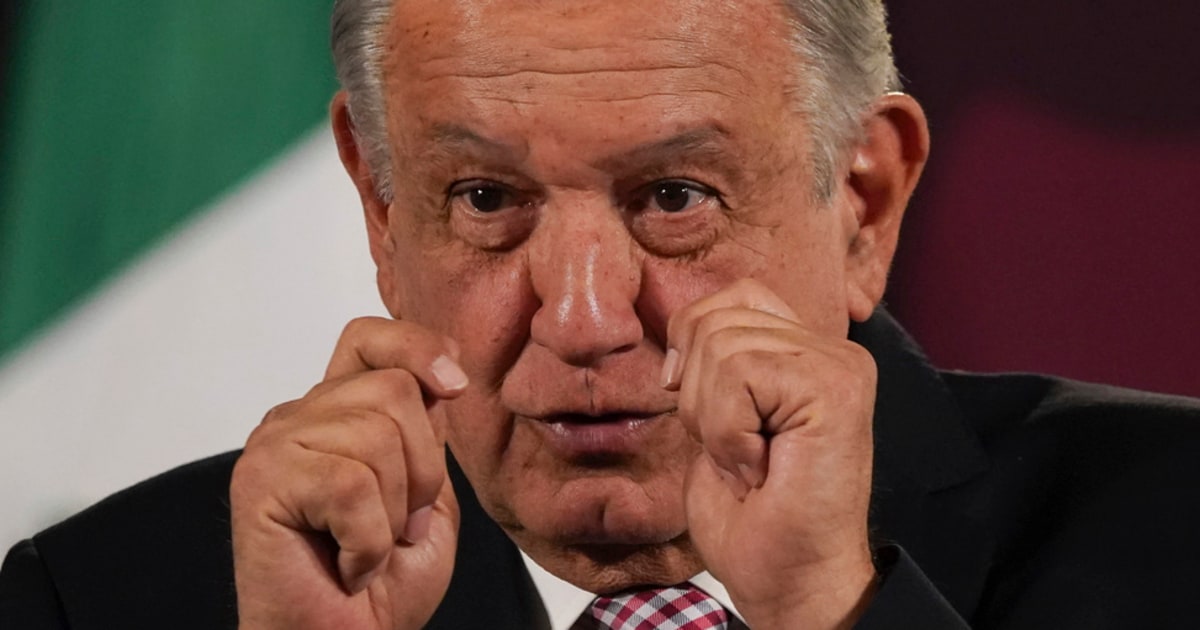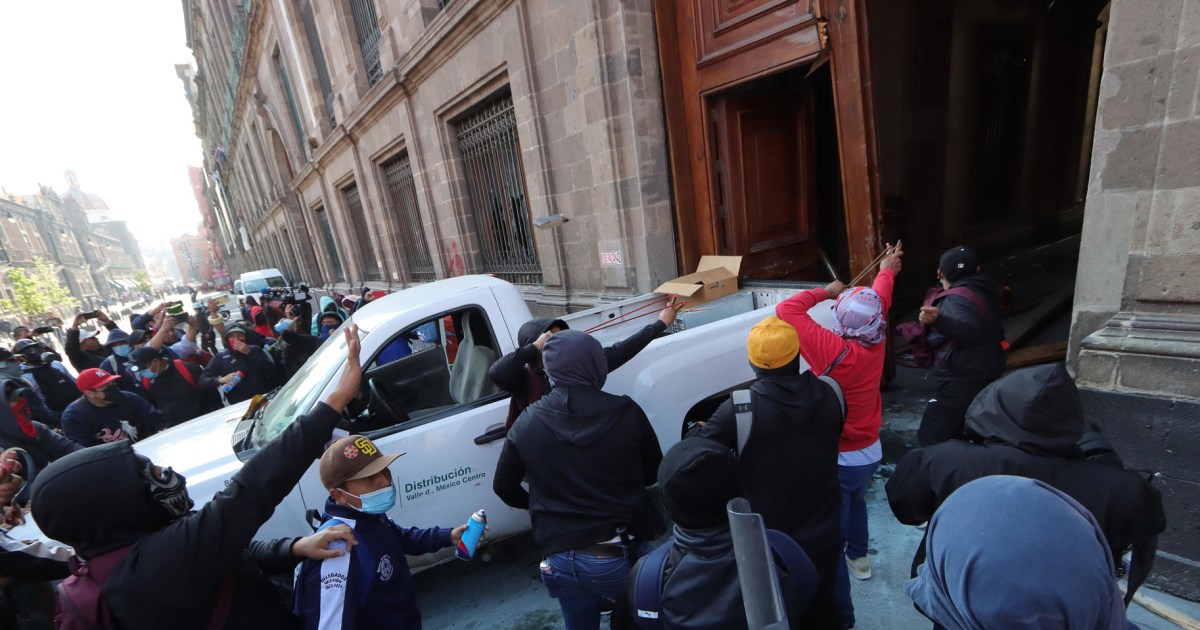Luz Maria Telumbre, mother of Christian Rodríguez, the student identified this year.HENRY ROMERO / Reuters
The attack against the normalistas students of Ayotzinapa turns six this Saturday.
Most of the questions remain open, especially those that host important questions: What happened to the 43 disappeared normalistas?
Why did they attack them?
The night of Iguala remains a mystery and not for lack of information.
The investigations into the case of the Mexican prosecutor's office, the group of independent experts sponsored by the OAS, the National Human Rights Commission and the Argentine forensic team, as well as the publications of journalists, academics and activists already make up a literary tradition, a field as deep and extensive as it is chaotic and ungraspable.
It is difficult to know what happened, because it is almost impossible to know what is true and what is not.
The first part of the investigation was riddled with irregularities.
The independent experts tried to illuminate the manipulation of their official peers and pointed the line to follow.
Until today it is known that a growing group of authorities - municipal, but also from other areas - collaborated with a criminal network, Guerreros Unidos, to attack the students.
This mafia conspiracy disappeared 43 normalistas.
Only the remains of two have appeared, small bone fragments, especially in the case of Christian Rodríguez: the authorities identified a piece of his foot this year.
The motive for the attack remains in the field of rumors.
The current prosecutors try to bring order out of chaos, but the challenge is formidable and the level of demand is no less intense.
Tired of good intentions, families want answers and reject any new narrative that is not based on hard, proven facts.
The bone identified this year encouraged them - and at the same time sank them - but the question is how that bone got to the place where they found it.
And what happened to that and the other students.
Here are several points to try to put some order on the moment of the case:
Arrests
One of the main demands of the lawyers of the 43 is that progress be made in the arrests of people involved in the attack and of officials who did their job badly.
In the first area, the authorities captured in June one of the alleged leaders of Guerreros Unidos, José Ángel Casarrubias, alias El Mochomo.
According to testimonies from other detainees, El Mochomo would be behind the logistical part of the attack against the 43. His case has brought the authorities upside down, who have managed to keep him in prison with an accusation unrelated to the
Ayotzinapa case
.
In any case, your testimony is essential to improve understanding of the night in Iguala.
In the case of the officials, the authorities recently detained Carlos Gómez Arrieta, chief of the Federal Ministerial Police, the executing arm of the prosecution.
Arrieta appears in a video that transpired last year, torturing one of the detainees, Carlos Canto, between the end of 2014 and the beginning of 2015. The video confirms the complaints about torture that the Office of the United Nations High Commissioner had made by the Human Rights in Mexico.
According to sources in the investigation who prefer not to identify himself, Arrieta turned himself in to officials of the Presidential Commission for the clarification of the
Ayotzinapa case
, based in the Roma neighborhood of the capital.
Less well known than Arrieta, the prosecution has also detained Blanca Castillo, the public prosecutor of the kidnapping unit of SEIDO, the organized crime prosecutor's office, in charge of investigating the
Ayotzinapa case
during the first year.
Castillo gave legal form to the investigations led by the director of the Criminal Investigation Agency, Tomás Zerón and Gualberto Ramírez, head of the SEIDO kidnapping unit.
The investigators' hope is that Castillo will help them reach Ramírez.
Tomás Zerón.
The biggest name on the table is Tomás Zerón.
Leader of investigators on the ground, Zerón is responsible for the famous historical truth.
It is the version of the attack and the fate of the 43 that the Government of Enrique Peña Nieto gave (2012-2018).
According to this version, the gangster conspiracy murdered the boys, burned their bodies in the Cocula garbage dump and threw the remains into a river.
Denied by the investigations of independent experts, the version of Zerón and company was finally buried this year, with the discovery of Rodríguez's remains, in a place almost a kilometer from the garbage dump.
The prosecution is looking for Zerón for crimes against the administration and administration of justice.
Zerón would have manipulated evidence, which helped build his version of events.
According to the same prosecution sources, Zerón flew to Canada in mid-August last year.
Before the month was out, he traveled to Israel.
A few weeks ago, López Obrador requested collaboration from the authorities of that country for his delivery.
Pending arrest warrants.
During these days there has been speculation about the possibility that the prosecution order, for the first time, the apprehension of soldiers linked to the case.
During the night of September 26 and early morning of September 27, 2014, the reaction force of the 27th Infantry Battalion, based in Iguala, patrolled through the municipality, near Juan N. Álvarez and Periférico, one of the two scenarios of The attacks.
Until now, the CNDH and the OAS group of experts had proven that the military arrived after midnight at a hospital near Juan N. Álvarez, where a group of 25 students took refuge, after a second attack registered in that scene .
The students were there with a colleague, Edgar Andrés, with a serious gunshot wound to the face.
Far from helping them, the students say that the military scolded them, threatened them and did not stop pointing their weapons at them.
They said things like "if they move we will shoot them", "keep hijacking buses", "have enough eggs to face things."
Then they took photos of them, took their names and left.
The head of the Reaction Force that night was Captain José Martínez Crespo.
If it is confirmed that the prosecution seeks to capture military personnel linked to the case, Crespo could be one of them.
Although the case could escalate further.
Process
magazine recently
published part of the statement of an old detainee, an alleged member of Guerreros Unidos, who recently approached the prosecution to provide information.
The prosecution calls him Juan.
According to his version, the military played an active role in the disappearance of the boys and their delivery to criminals from Guerreros Unidos during the attack.
The historical truth.
The discovery of a bone of Christian Rodríguez in the La Carnicería ravine, one kilometer from the Cocula garbage dump, has generated a lot of speculation regarding the case.
But the truth is that no one has argued for years that the 43 were burned in the garbage dump.
First the group of independent experts and then the Argentine forensic team denied this possibility, after their expert reports in the garbage dump.
Since then, the environment of Zerón and his superior at the time, the prosecutor Jesús Murillo Karam, have stated that the group that was burned in the garbage dump was less than 43. The unofficial rectification of the prosecution has occurred without arguments or tests.
The independent expert reports on the landfill suggest that it is difficult for a fire to break out in the landfill of the size necessary to undo a large group of people.
In any case, assuming the theory that a smaller group of students ended up in the garbage dump, what happened to the rest?
The witness Juan points out that the students were murdered in different places and their remains were distributed in different places.
However, the veracity of the witness is in doubt, given his criminal past.

/cloudfront-eu-central-1.images.arcpublishing.com/prisa/CC3BQDKRPJDC5E4HKA2KDBRRSY.jpg)












/cloudfront-eu-central-1.images.arcpublishing.com/prisa/B7F2F3HZ2JCUHDZJKAGKAXXPSU.jpg)